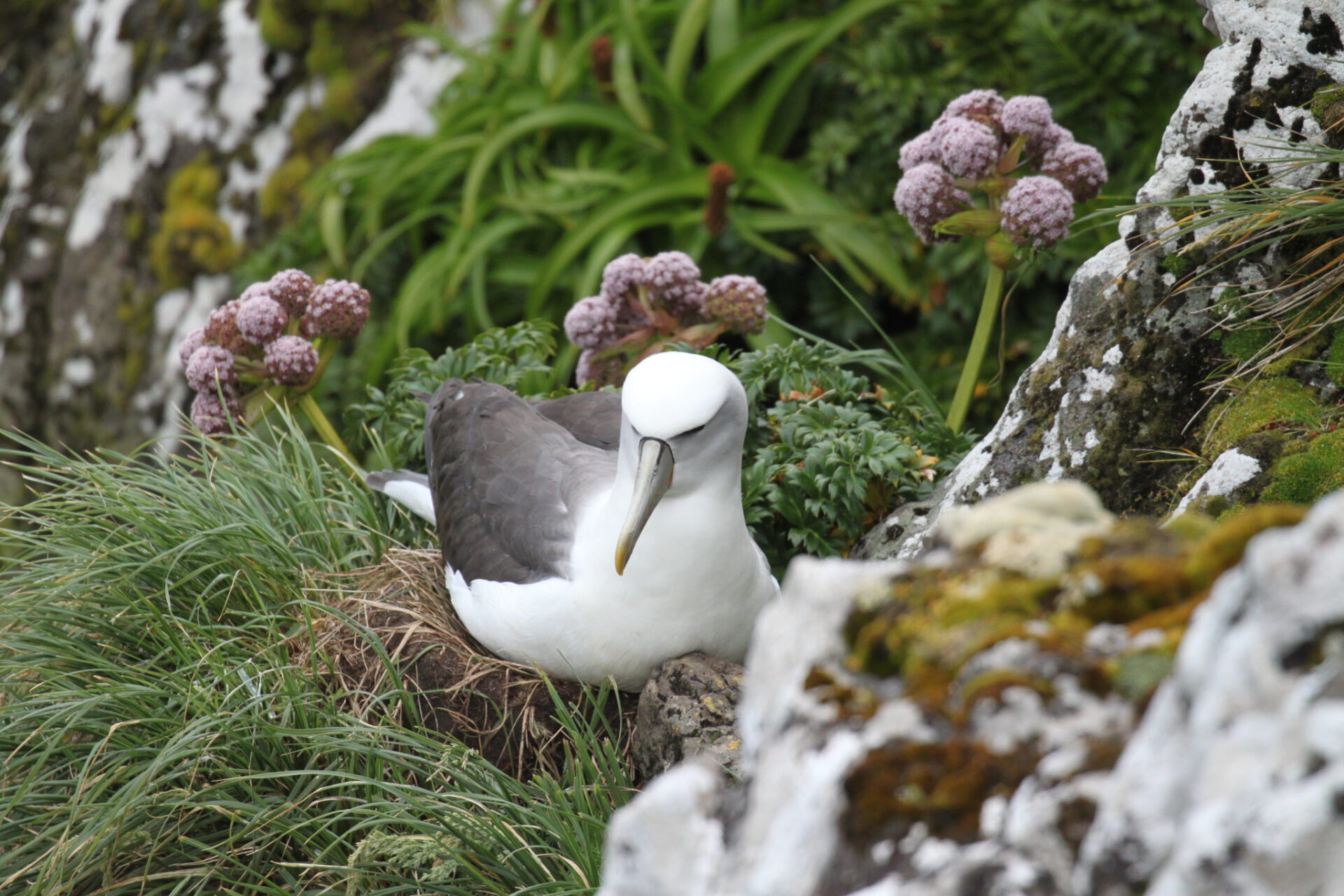Motu Maha / Auckland Island (500km from Bluff)

Motu Maha is the largest island within Aotearoa’s Sub-Antarctic island group, covering an area of 625.64 km2. This archipelago was discovered in 1806 by Captain Abraham Bristow, a British whaler who stumbled across the islands as he and his crew searched the southern ocean for whales. Positioned 290km to the north of Motu Ihupuku, local weather conditions on this island are slightly more temperate.
Approaching Motu Maha from the south, our first point of entrance was Carnley Harbour. As we entered the harbour, we were welcomed by a rare calm patch of ocean that was as glassy as oil.

Motu Maha is unique from Aotearoa’s other Sub-Antarctic islands as they are the only island with Southern Rātā forests. These trees are able to survive the local weather conditions, however, the cold climate stunts their growth and are rarely found to grow taller than 20 metres.

Home to the wreck of the Grafton, Carnley Harbour holds a unique history that involves courage, resilience, and teamwork. The Grafton was a schooner sailing ship that came to the Sub-Antarctic island’s in search of tin and seals. On the 3rd of January, 1864, the Grafton wrecked in the north arm of Carnley Harbour after getting into trouble when its anchor broke free, forcing the ship against the rocky coast.
With significant blows to the hull and a rising tide, the Grafton’s keel was torn from the ship and it began to sink, leaving the five men stranded ashore. Surviving on land for 18 months in a hut made from the ship’s wreck, the men spent their time reconstructing a modified version of the Grafton. In July 1865, three of the men sailed the reconstructed ship back to Rakiura (Stewart Island), with the two men left behind rescued a few weeks later.
During this time another ship, the Invercauld wrecked on the northern end of Motu Maha. Without knowing that these two castaways were living in coincidence, the two groups took different survival approaches. The crew of the Invercauld turned to violence and cannibalism, while the crew of the Grafton worked together to survive. 58 years to the day that the Grafton wrecked, we stood at the last remains of the shipwreck.


The South-West Cape of Motu Maha is home to a white-capped Mollymawk colony that in 2013 was estimated by DOC to be of 5,846 breeding pairs.


White-capped Mollymawks are smaller than southern royal toroa, with wingspans reaching up to 2.5 metres. These species can be characterised by their distinct black wings which continue across their back, and their grey bill with a yellow tip.


